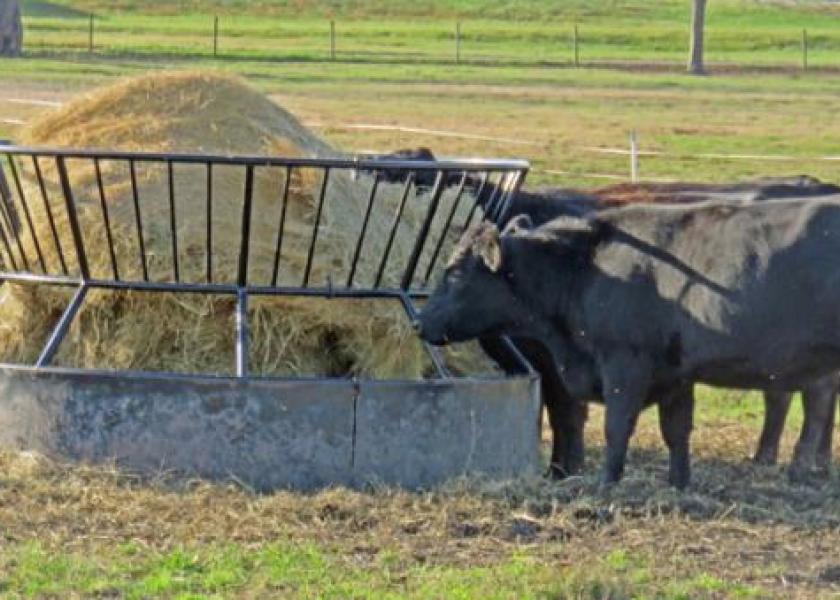Forage Budgeting with Non-Traditional Sources of Hay

Determining how much forage cows will eat on a per day and per month basis for the duration of winter always requires a little “cowboy math”. Chapter 16 of the eighth edition of the OSU Beef Cattle Manual is an excellent reference for estimating intake and the nutritional requirements of dry and lactating beef cows. This year, with many “non-traditional” sources of hay such as soybean, milo, cotton and corn fields that were turned into hay out of dire necessity, requires a little additional math to make a good estimate. Making the best estimation of how much hay you will need over the next few months still requires a feed analysis test. The information gained through an analysis, like TDN (energy content) and Crude Protein serve as a guide of two things: 1) how much cows will consume, and 2) how much they will need of a specific hay (or feed supplement) to meet their nutritional requirements.
For example, a 1300-pound, dry cow in the last trimester of pregnancy requires 13.3 pounds of TDN and 1.84 pounds of energy per day. A hay testing with 54% TDN and 7.5% Crude protein consumed at 1.9% of her body weight results in a daily dry matter intake of 24.5 pounds of dry matter. This intake of this hay will meet her daily needs without additional supplementation.
If we consider how much actual hay we need to provide each day a few more items need to be taken into consideration:
- Hay isn’t all dry matter. Assuming our hay is 90 – 93% dry matter (or 7-10% water). Taking this into account adds another 2-3 pounds of hay per day “as fed”.
- Hay will be wasted. Depending on quality of the hay, weather, type of hay feeder used or feeding method, cows will waste 6 – 20% of each bale fed. If you are feeding a non-traditional hay there may be more sorting by cows. Specifically, the bottom end of the corn or sorghum stalk is very low in nutrient quality, cows will sort out most of this portion and intake will be very low. In the past few weeks, I am hearing estimates from producers feeding cornstalk hay that up to 30-40% of the bale is stalks which cows will not eat. This needs to be taken into consideration. Assuming 20% of each bale is wasted, it adds another 7-8 pounds of hay per day “as fed”. After taking dry matter content and waste into account we are looking at 34-35 pounds of hay per day needed.
- What else should you consider? What does each bale weigh and how much is spoiled? If you have purchased hay by tonnage, it is easy to calculate the average weight of each bale. Rule of Thumb for estimating how much spoilage per bale: approximately 1/3 of the bale weight of a 5 ½ foot diameter round bale is in the outer 6 inches. Even 2-3 inches of spoilage on the bottom side of the bale can equal a substantial loss.
Hay is highly valuable and in short supply. Use these guidelines to estimate at how much you need to be providing per cow per day and extend it over the winter to decide how much hay inventory is enough.
One final point, feeding waste can be reduced! Open bottom round bale feeders can have up to 30% waste, sheeted bottom feeders can reduce this to 20%. Cone feeders can reduce the waste to less than 10%.
Dr. Mark Johnson discusses proper hay storage on SunUpTV’s Cow-Calf Corner. https://www.youtube.com/watch?v=TJvKw8ykqC0







